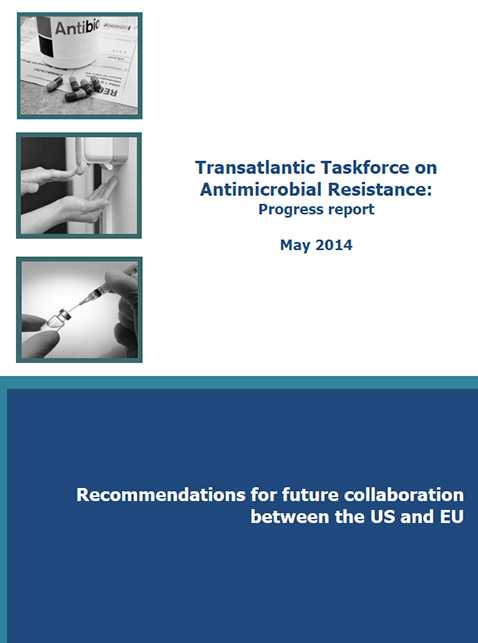About TATFAR
How TATFAR Started
The growing global threat of antimicrobial resistance (often called “AR” in the U.S. and “AMR” elsewhere) was recognized in the 2009 U.S. – European Union (EU) Summit Declaration.
Leaders committed to combatting this threat included:
- U.S. President Obama,
- Swedish Prime Minister and European Council President Reinfeldt, and
- European Commission President Barroso.
On This Page
The U.S. and the EU recognized they needed to work together to address urgent AR issues especially in these 3 Key Areas:
- Improve appropriate therapeutic use of antimicrobial drugs in medical and veterinary communities,
- Prevent healthcare- and community-associated drug-resistant infections, and
- Develop strategies for improving the pipeline of new antimicrobial drugs.
TATFAR Work
At the start, TATFAR identified and adopted 17 recommendations for future collaborations between the U.S. and the EU. Collaboration has led to:
- increased information exchange,
- understanding of best approaches and practices, and
- development of peer relationships.
TATFAR members currently collaborate on 20 actions aimed at coordinating efforts to address AR.
TATFAR Progress
In May 2014, the taskforce released a report summarizing the progress and the outcomes of the implementation of the original 17 recommendations. The taskforce decided to continue with 15 recommendations, retire two, and create one new recommendation for collaboration 2014-2016.
While significant progress has been made, concern related to AR continues to escalate. In October 2015, TATFAR revised its work plan and extended the collaboration for an additional five years (2016-2020). All progress since the 2014 Progress Report is posted directly to the website.
Since 2014, CDC has provided the secretariat for the taskforce and publishes documents and updates relating to the work of the taskforce on this website. The European Centre for Disease Prevention and Control (ECDC) provided the secretariat from 2009-2013.
- Page last reviewed: July 25, 2017
- Page last updated: July 25, 2017
- Content source:


 ShareCompartir
ShareCompartir
